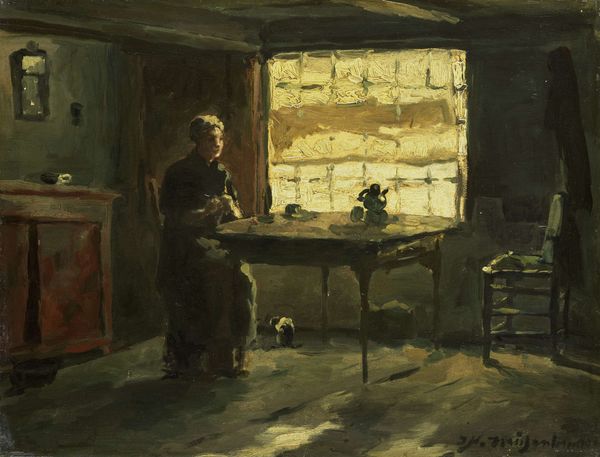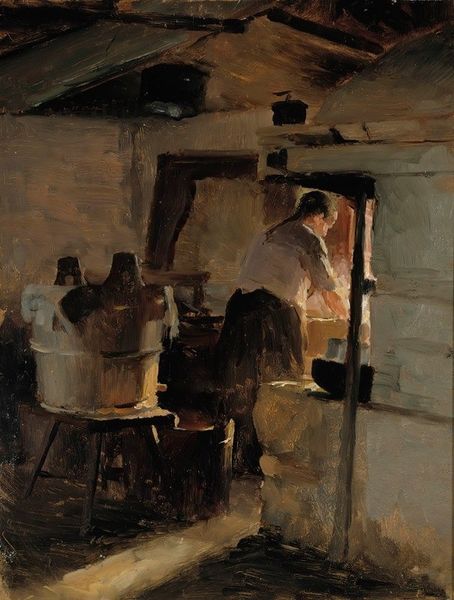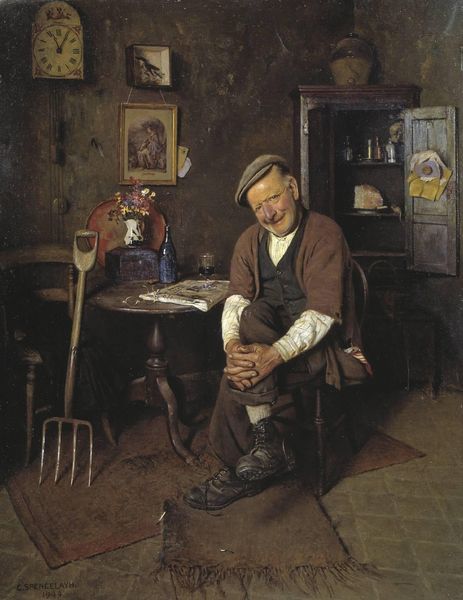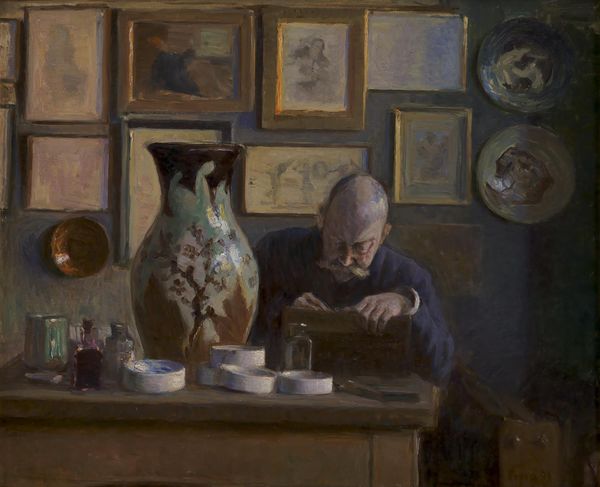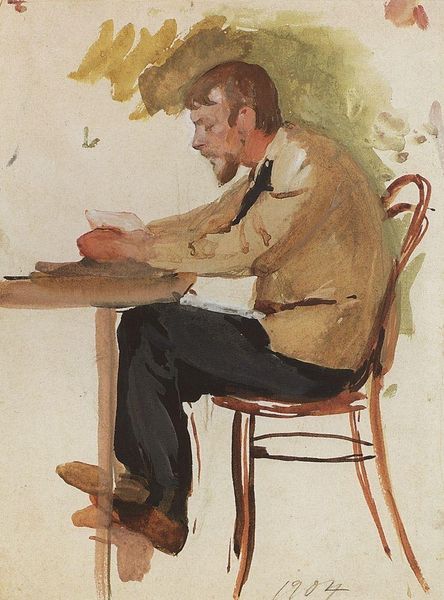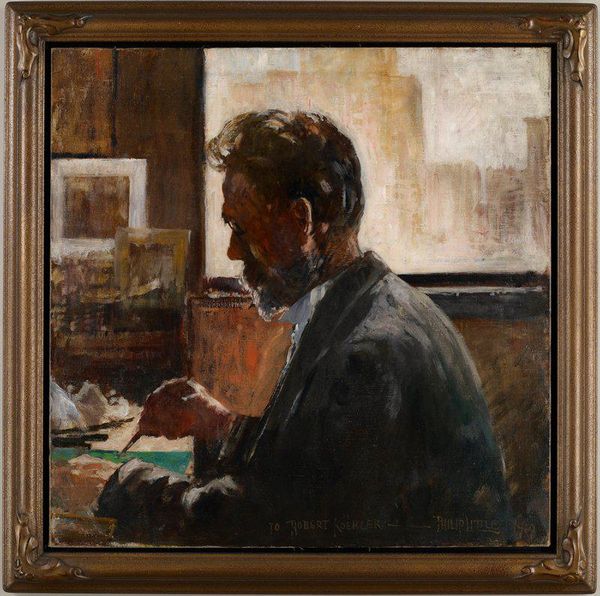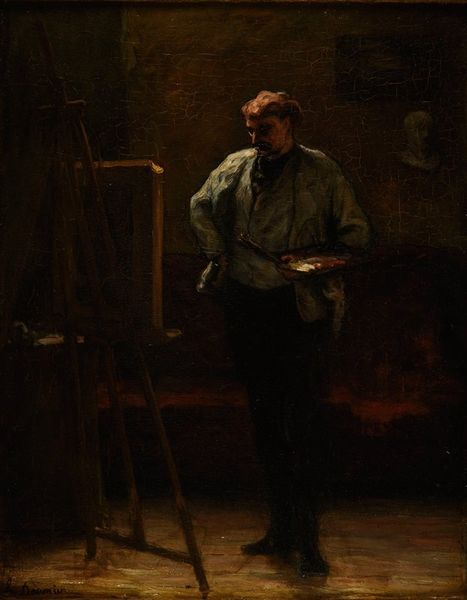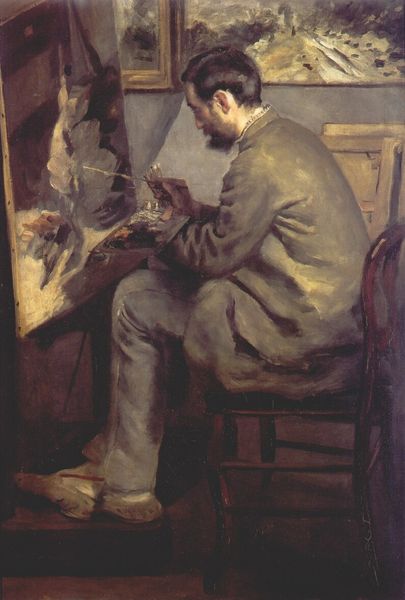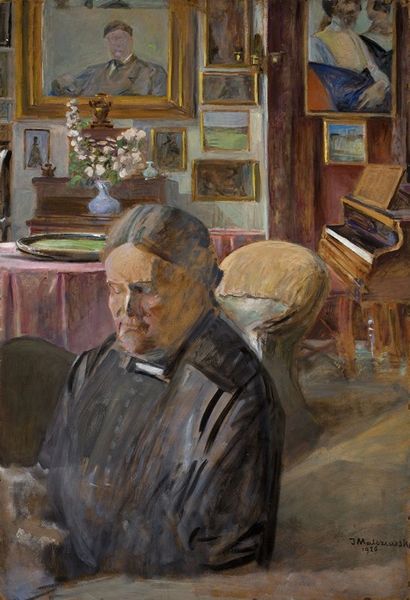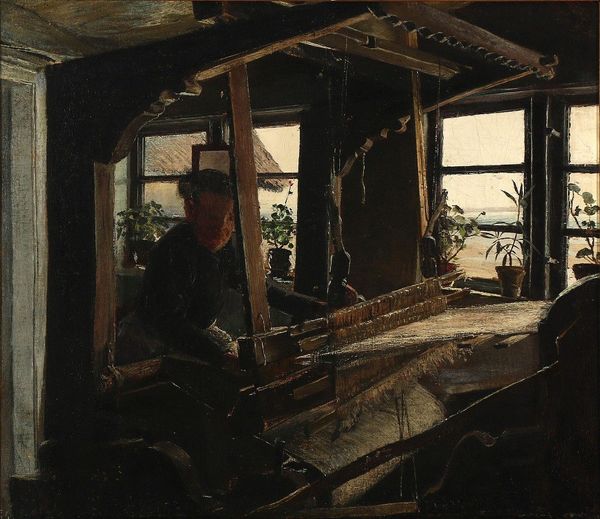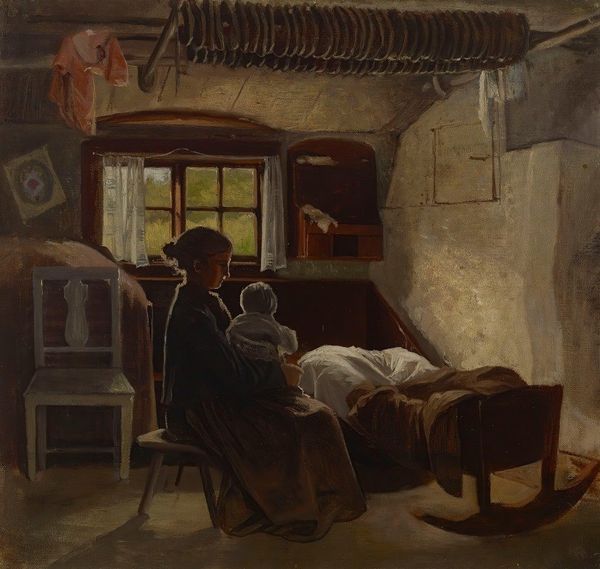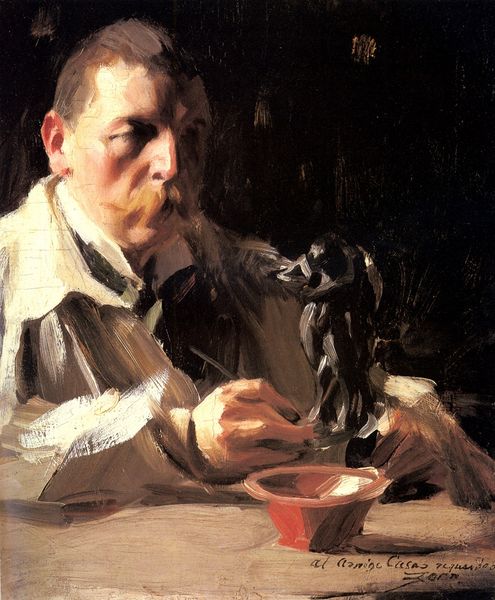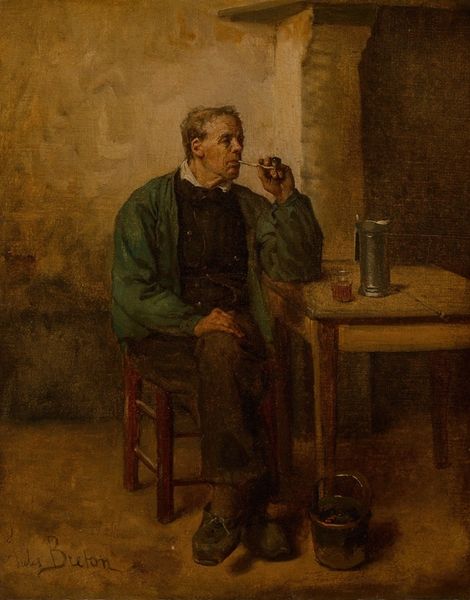
plein-air, oil-paint
#
portrait
#
gouache
#
figurative
#
plein-air
#
oil-paint
#
oil painting
#
fine art portrait
#
realism
Copyright: Modern Artists: Artvee
Curator: Let’s spend a moment with Norman Rockwell’s "Is It Play for Eyes Too," painted in 1929 using oil paint. The piece captures a young man diligently constructing a model airplane in his attic workspace. What are your immediate impressions? Editor: It feels like peering into a time capsule, a nostalgic glimpse into youthful concentration. The subdued palette and sharp contrast remind me of Old Master paintings; you'd think the artist had taken it directly out of a 17th-century Dutch home. Curator: Rockwell was a master storyteller through images. Notice how the composition guides our eye. The strong diagonal created by the attic roof directs our attention to the window and then down to the young man’s focused face, then onto the table—where his creation lies. The airplane functions as a kind of literal manifestation of the room’s potential, an invitation out and away from domestic life, out into the big world. Editor: I agree. He does seem consumed by the tangible possibilities within his reach. However, it strikes me that Rockwell seems almost equally fascinated by the texture of light and shadow playing across the figure. This attention to detail—the highlights on his sleeve, the darkened space of the attic—renders this less pure narrative and more painterly exploration of how visual elements like line and form shape our perception. Curator: I get the impulse for a purely visual analysis; in any other artwork, I'd totally agree, but given Rockwell's dedication to Realism, to Americana, there has to be a broader story in this case. Note how Rockwell employs subtle elements to enhance the emotional depth. The dog asleep at the boy’s feet hints at companionship and shared quiet hours, and I can see that reflected in the angle of his shoulders. Editor: And this kind of anecdotal detail becomes central. I see what you're getting at; there’s definitely this sentimentality baked into Realism as a tradition that seems a little too "on the nose." I do see why his portraits maintain this broad appeal. He understands that capturing that spark of ambition in everyday life connects profoundly. Curator: Exactly, like a portrait not just of the subject, but of the kind of imagination it might have harbored. I walk away from this one with the lingering sentiment that there's more that unites us, despite obvious divisions, than divides. Editor: It's interesting; it might come off a little on the saccharine side, but I find it a competent reminder of what we all want, at the end of the day: the freedom and material with which to express ourselves.
Comments
No comments
Be the first to comment and join the conversation on the ultimate creative platform.
